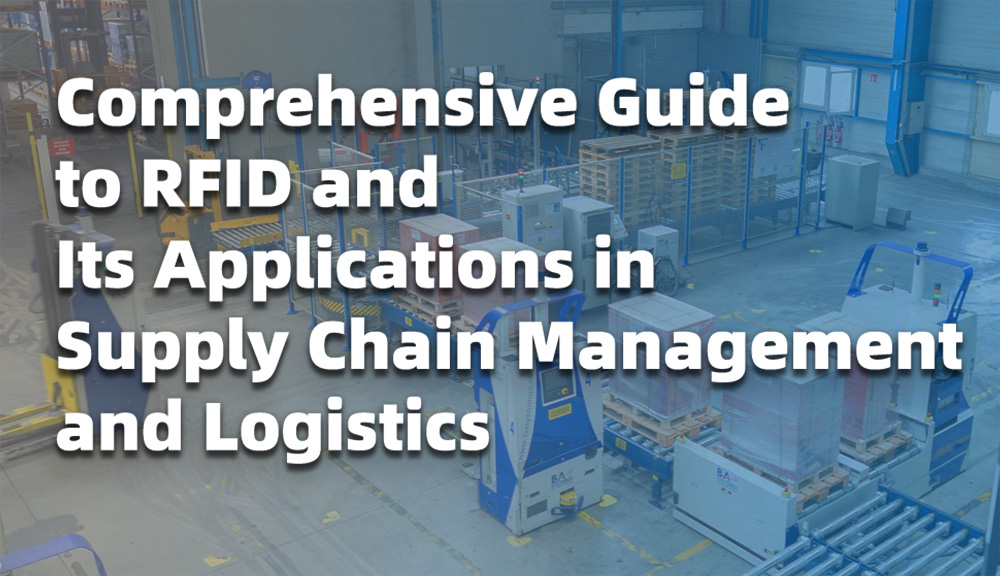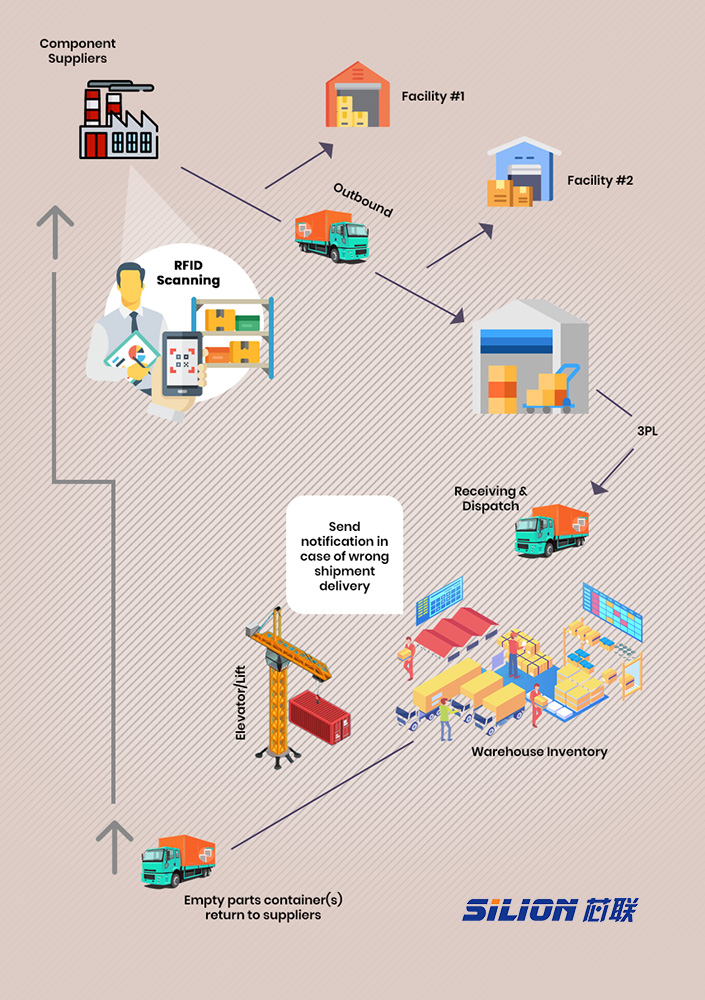Your location: Home Page > RFID Blog | SILION TECH > Comprehensive Guide to RFID and Its Applications in Supply Chain Management and Logistics
News and Information
Comprehensive Guide to RFID and Its Applications in Supply Chain Management and Logistics
Author:2024-03-13 14:25:41
Ever wondered how online retailers can ensure your order arrives promptly at your doorstep? Or how large warehouses manage vast quantities of products efficiently? Radio-frequency identification (RFID) plays a crucial role in this complex dance.
This blog serves as a comprehensive guide to RFID technology, specifically delving into its applications within the dynamic world of supply chain management and logistics.

Imagine tiny tags containing data that can be wirelessly scanned from a distance. That's the essence of RFID. These tags, attached to objects, communicate with RFID readers using radio waves. Unlike barcodes requiring line-of-sight scanning, RFID offers:
Faster and more efficient reading: Scan multiple tags simultaneously, even through boxes or containers.
Greater data storage: Store additional information beyond simple product identification.
Real-time tracking: Gain instant insights into an object's location throughout the supply chain.
RFID systems typically consist of three components:
RFID Tags: Tiny microchips attached to objects, containing relevant data.
RFID Readers: Devices emitting radio waves to communicate with tags and extract data.
Software: Analyses the collected data, providing valuable insights into the supply chain.
Types of RFID Tags:
There are two main types of RFID tags based on their power source:
Passive Tags: Rely on the reader's radio waves for power, offering a lower cost but limited reading range.
Active Tags: Possess an internal battery, enabling longer read range and even transmitting data to the reader.
Now, let's explore how RFID empowers businesses to optimize their supply chain operations:
Enhanced Inventory Management:
Gain real-time visibility into stock levels, eliminating manual counting and reducing the risk of stockouts. Streamline picking and packing processes, ensuring accurate order fulfilment.
Optimized Warehouse Management: Track the movement of goods within the warehouse, improving efficiency and reducing misplaced inventory. Automate tasks like product sorting and directing forklifts to designated locations.
Seamless Transportation and Logistics: Monitor the movement of goods during transportation, providing greater transparency and reducing the risk of delays. Simplify customs clearance by embedding relevant data within the tags.
Improved Asset Tracking: Track valuable equipment and tools within the supply chain, preventing loss or theft. Schedule timely maintenance based on usage data collected through RFID tags.
Benefits of Implementing RFID in Supply Chains:
Increased Efficiency: Automates manual tasks, leading to faster processing times and reduced labour costs.
Improved Accuracy: Real-time data minimizes errors in inventory management and order fulfilment.
Enhanced Visibility: Provides a comprehensive overview of the supply chain, enabling better decision-making.
Reduced Costs: Lower labour costs, minimized shrinkage (loss of inventory), and improved efficiency lead to overall cost reduction.
Challenges and Considerations:
While RFID offers significant advantages, some challenges need to be addressed:
Initial Investment: The cost of deploying RFID tags and readers can be substantial.
Integration with Existing Systems: Seamless integration with existing warehouse management systems (WMS) is crucial.
Security Concerns: Data stored on tags needs robust security measures to prevent unauthorized access.

The Future of RFID in Supply Chains
As technology evolves, RFID is poised to play an even greater role in supply chain management. Here are some exciting possibilities:
Integration with Blockchain: Combining RFID with blockchain technology can ensure secure and transparent data tracking throughout the supply chain.
Sensor-equipped Tags: Tags embedded with sensors can monitor environmental conditions like temperature or pressure during transportation.
Advanced Analytics: Leveraging data analytics from RFID data can further optimize logistics and predict potential issues.
How can businesses integrate RFID technology within their supply chain operations?
Here's a breakdown of how businesses incorporate RFID into their supply chain:
1. Planning and Analysis:
Identify needs: Businesses first assess their specific pain points within the supply chain.
Feasibility study: Analyze the cost-effectiveness of implementing RFID compared to the potential benefits.
Choosing the right tags: Selecting appropriate tags (passive/active) based on read range, data storage requirements, and budget.
2. Infrastructure Setup:
Tagging: Products, pallets, or containers are tagged with appropriate RFID tags. This can be done at the manufacturing stage or upon receiving inventory.
Reader deployment: Strategically placing RFID readers at crucial points throughout the supply chain. This includes entry/exit points of warehouses, shipping docks, and potentially within transportation vehicles.
Software integration: Integrating RFID data with existing Warehouse Management System (WMS) or developing new software to manage the collected data.
3. Implementation and Operation:
Data collection: RFID readers automatically capture data from tags as they pass through their designated zones.
Data analysis: The software translates the collected data into meaningful insights, providing real-time information on inventory levels, location tracking, and potential issues.
Process optimization: Businesses utilize the data to automate tasks, improve inventory management, and optimize logistics processes.
Additional Considerations:
Standardization: Businesses might need to adhere to industry-specific standards for RFID tags and data formats.
Security measures: Implementing robust security protocols to safeguard sensitive data stored on RFID tags.
Training: Providing adequate training to employees on using RFID technology and interpreting the data effectively.
Benefits of a Phased Approach:
Many businesses opt for a phased approach to implementing RFID:
Pilot project: Starting with a smaller scale implementation in a specific area of the supply chain to assess its effectiveness and identify any challenges.
Gradual expansion: Based on the success of the pilot project, businesses can gradually expand RFID integration to other areas of the supply chain.
Examples of RFID Applications:
Retailers: Tracking inventory levels in stores, preventing stockouts, and enabling self-checkout options.
Pharmaceuticals: Monitoring temperature-controlled environments during transportation to ensure product quality.
Manufacturing: Tracking components and finished products throughout the production process, reducing errors and improving efficiency.
By carefully planning, implementing, and continuously optimizing their RFID systems, businesses can unlock the true potential of this technology and gain a significant advantage in today's competitive supply chain landscape.
Next Article:Building the Warehouse: A Guide to Modernization